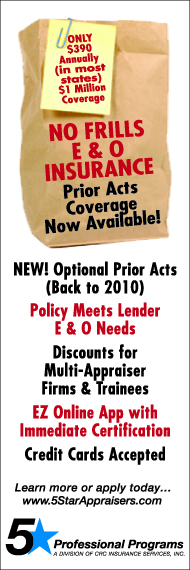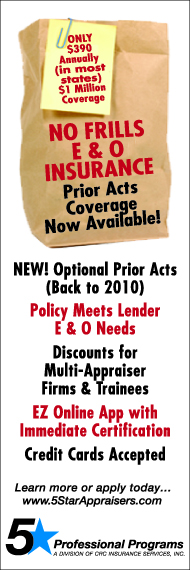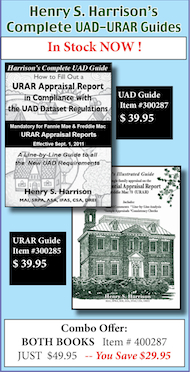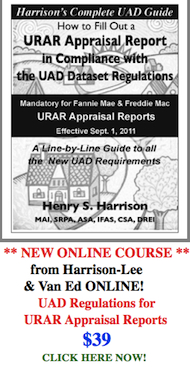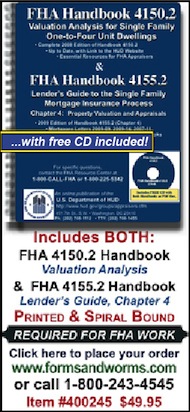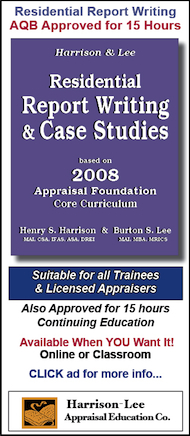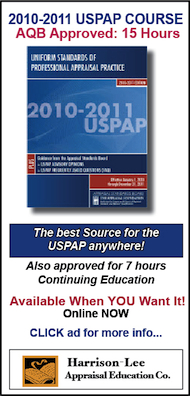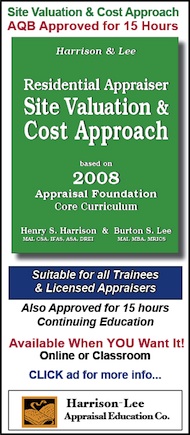Book Review
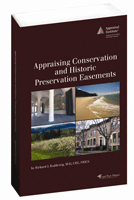
Historic Preservation Easements
by Howard J Roddewig, MAI, CRE, FRICS
Soft Cover • 666 Pages • $75.00
Publication Date: 2011
Appraisal Institute
550 W. Van Buren, St
Chicago, Il 60607
phone: 312 355-4140
www.appraisalinstitute.org
This is a big book. It is almost as big as The Appraisal of Real Estate 13th edition, which -- in just 742 pages -- covers the whole body of knowledge of real estate appraising. There seems to be a trend whereby the Appraisal Institute publishes highly specialized books on important appraisal topics without concern for how long they are. The purpose is to enrich the knowledge base of the profession, rather than to make a profit.

Taxpayers, their accountants, and tax attorneys are constantly seeking ways for their clients to donate things to charity that have a value far in excess of their original acquisition cost. Their donation to a charity allows the donor to take a tax deduction that will save them a substantial amount of taxes. Art work is an excellent example of this type of donation. Whether the value set by the donor will be accepted by the IRS often depends upon the quality of the appraisal that the donor provides to the IRS to support their claimed valuation. Art appraisers who know how to produce these appraisals have developed a lucrative source of income.
There is a lot of similarity between an art work donation and an historic easement donation. To appraisers, the most important thing is that the quality of such an appraisal is critical to the IRS acceptance of the claimed value of the donation. In this situation, the IRS gives heavy consideration to the appraiser’s qualifications and designations, as well as to the credibility of the appraisal.
The number of historic easements that are being donated to charities is accelerating. The beauty of an historic easement vs an art donation is you really don’t give anything up. In fact, the historic easement may enhance the value of the remaining property.
Appraisers who do partial takings and easements know that the preferred appraisal method is the “before and after” method and many courts will accept only this method. However, according to this book, which cites IRS Publication 561, this is not the IRS’s preferred method and it should only be used when comparable sales cannot be located.
One of the most interesting and controversial chapters in the book is the “Appropriateness of the Cost Approach in Conservation and Historic Preservation Easement Appraisals: General Considerations.” It quotes heavily from the Appraisal of Real Estate (13th Edition), and makes a case that it is appropriate to use the cost approach to value land that is involved in an historic easement situation. It also quotes the USPAP to support the same conclusion, by referring to FAQs 149 and 150. Before you go off and make one of these appraisals, you should also read the USPAP Competency Rule: “An appraiser must: (1) be competent to perform the assignment:…Competency requires…the knowledge and experience to complete the assignment competently…”.
In my opinion, a good first step to acquiring competency in any subject is to read the best book available on the subject. Fortunately, you don’t have to waste your time looking for that book, for this clearly is it. It covers the subject from acquisition of conservation easements to zoning. If you need more, there's also an 18 page bibliography.
Before you go into this specialized field, be sure you have the stomach for testifying -- and being cross examined -- at an IRS hearing or IRS court trial. I never found them much fun, though I really did like condemnation hearings and other types of court cases.
H2




